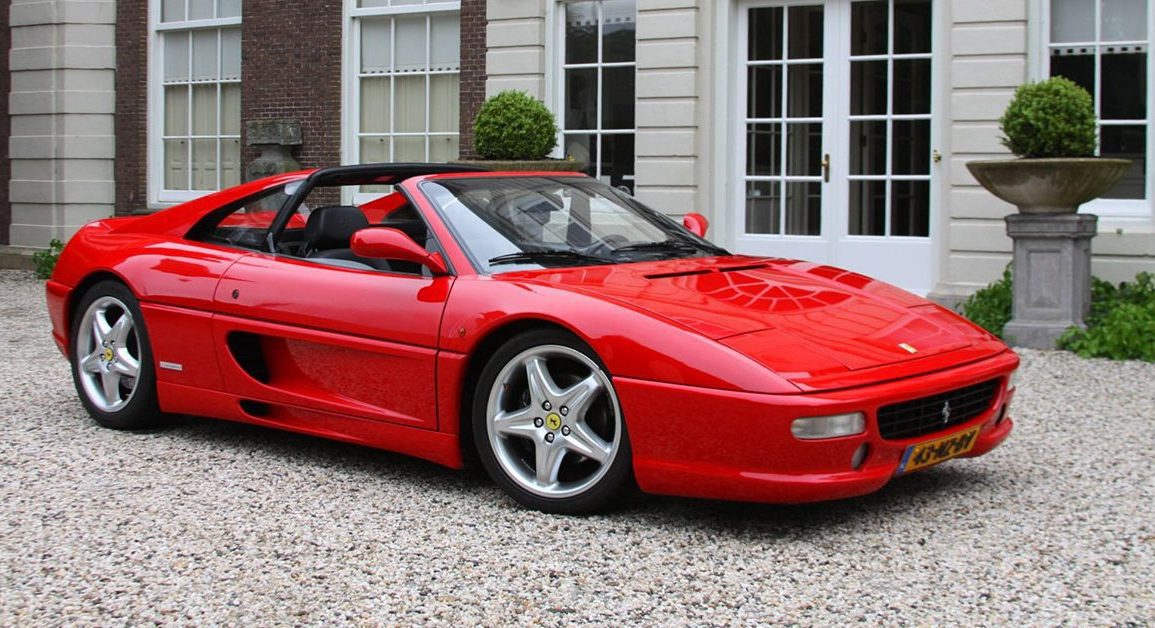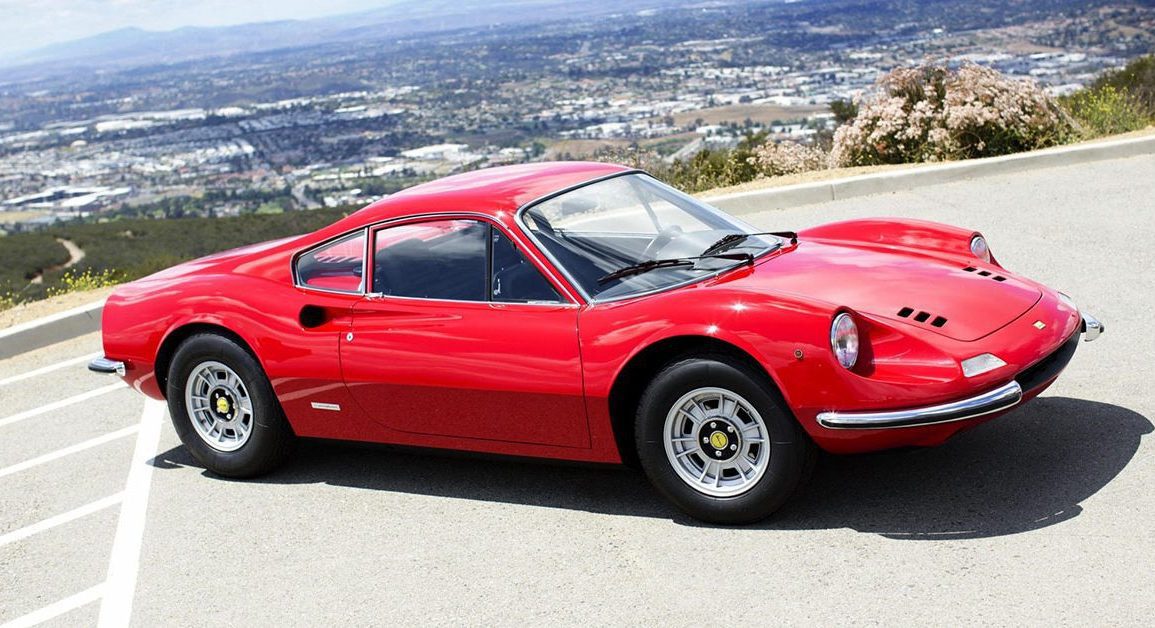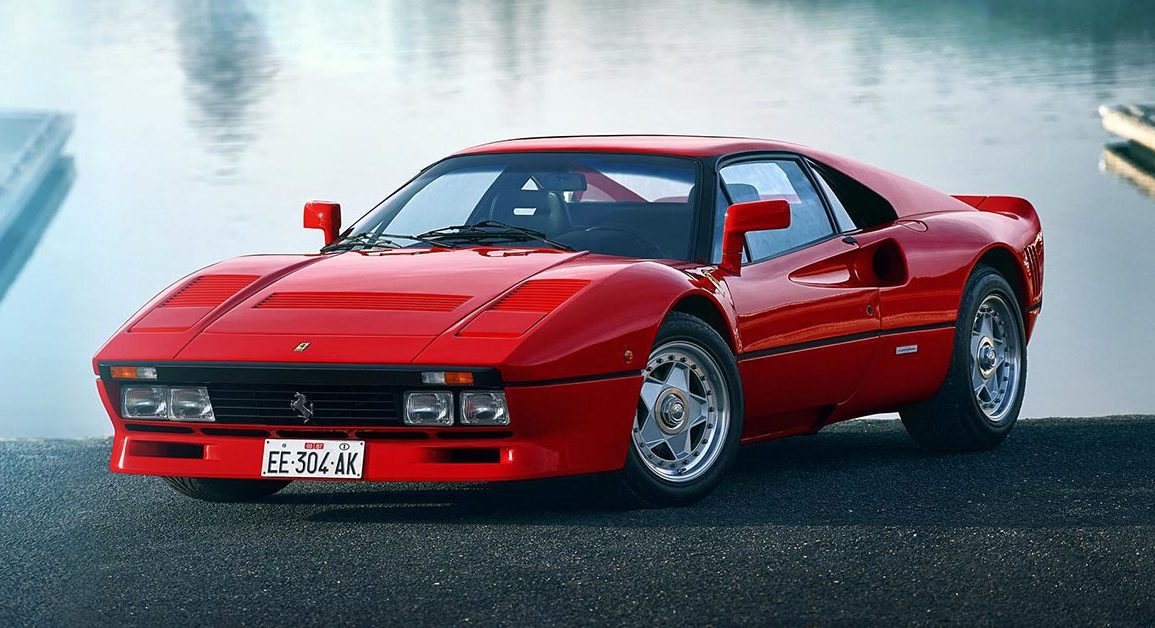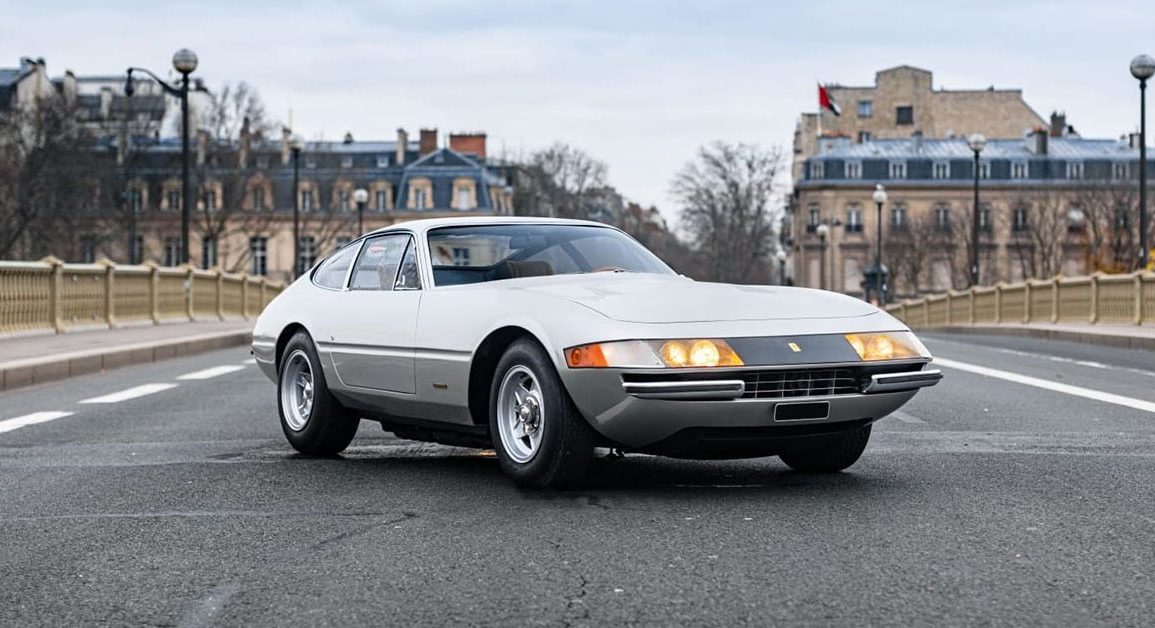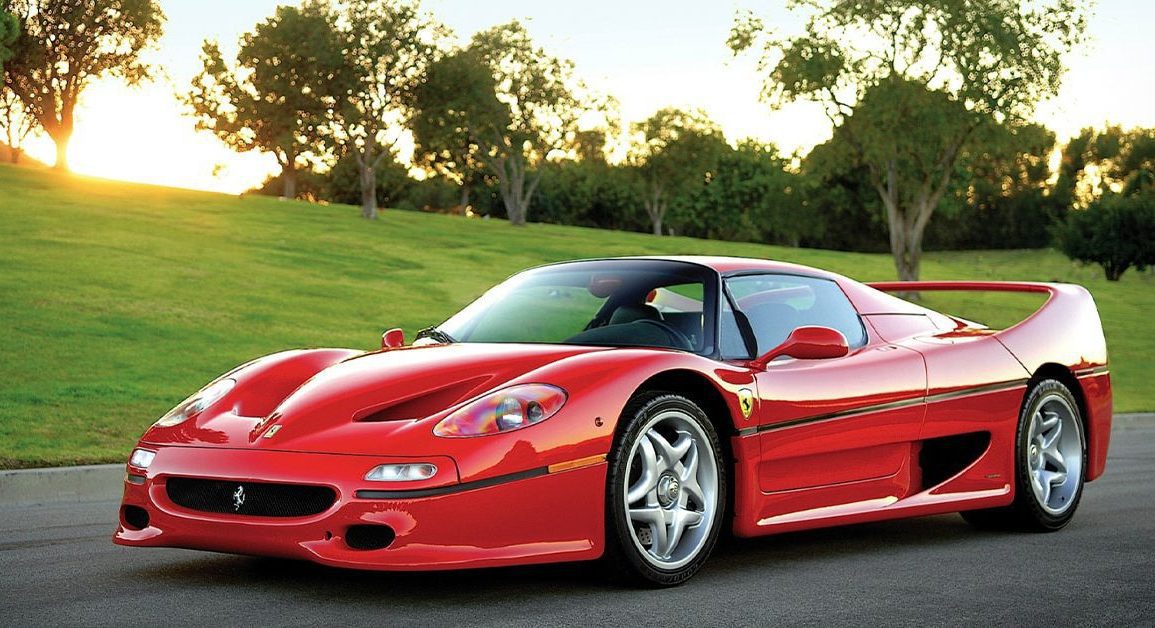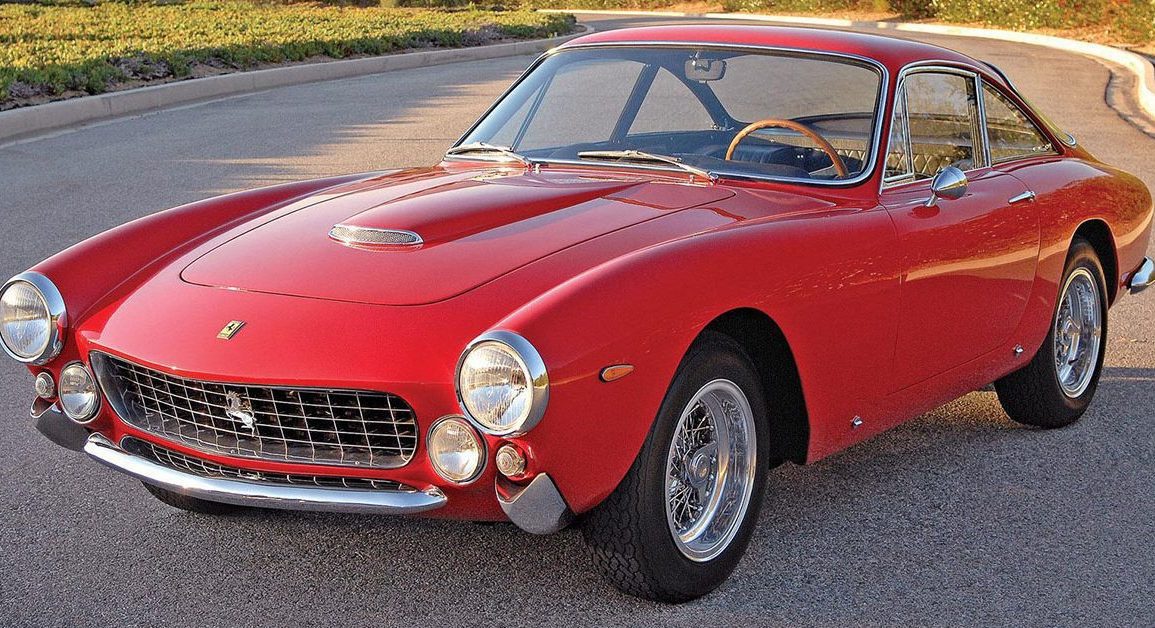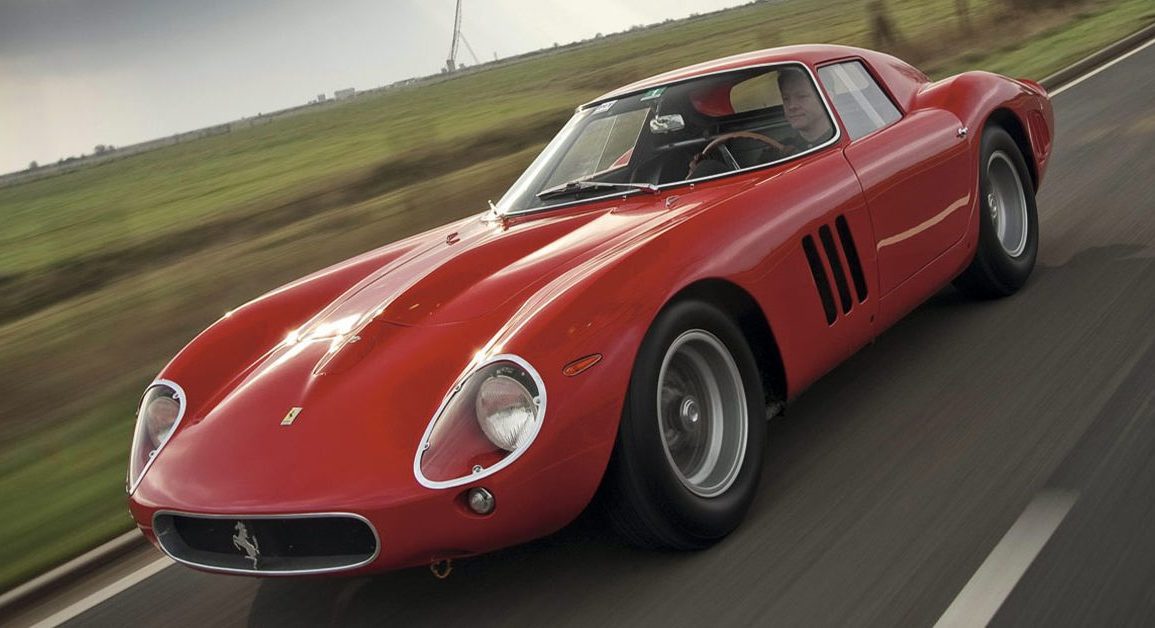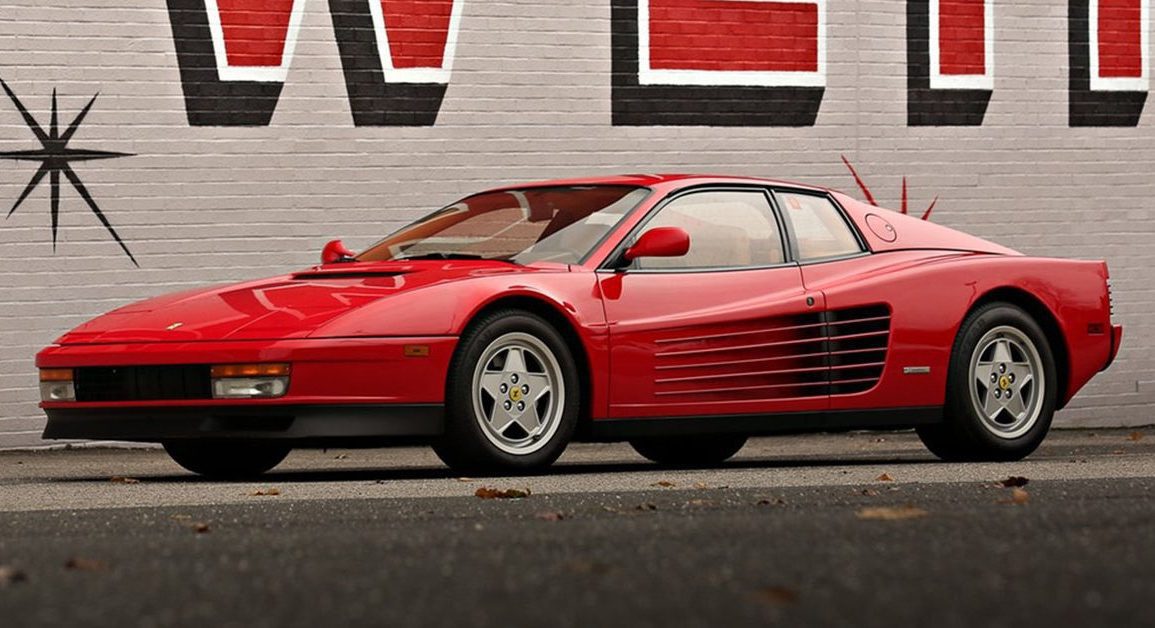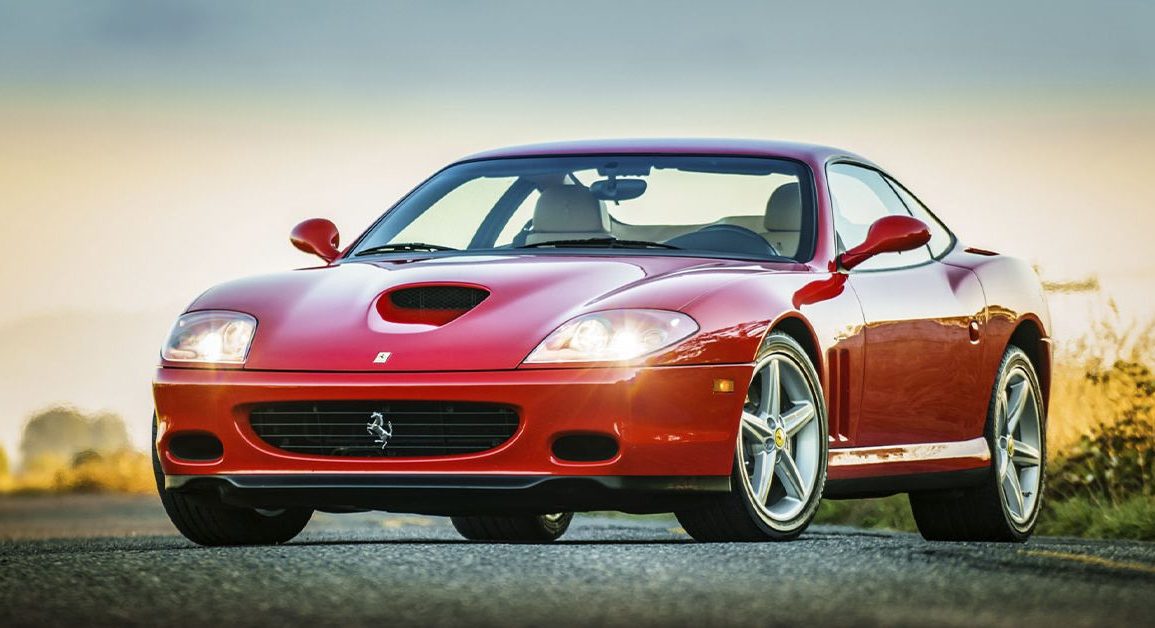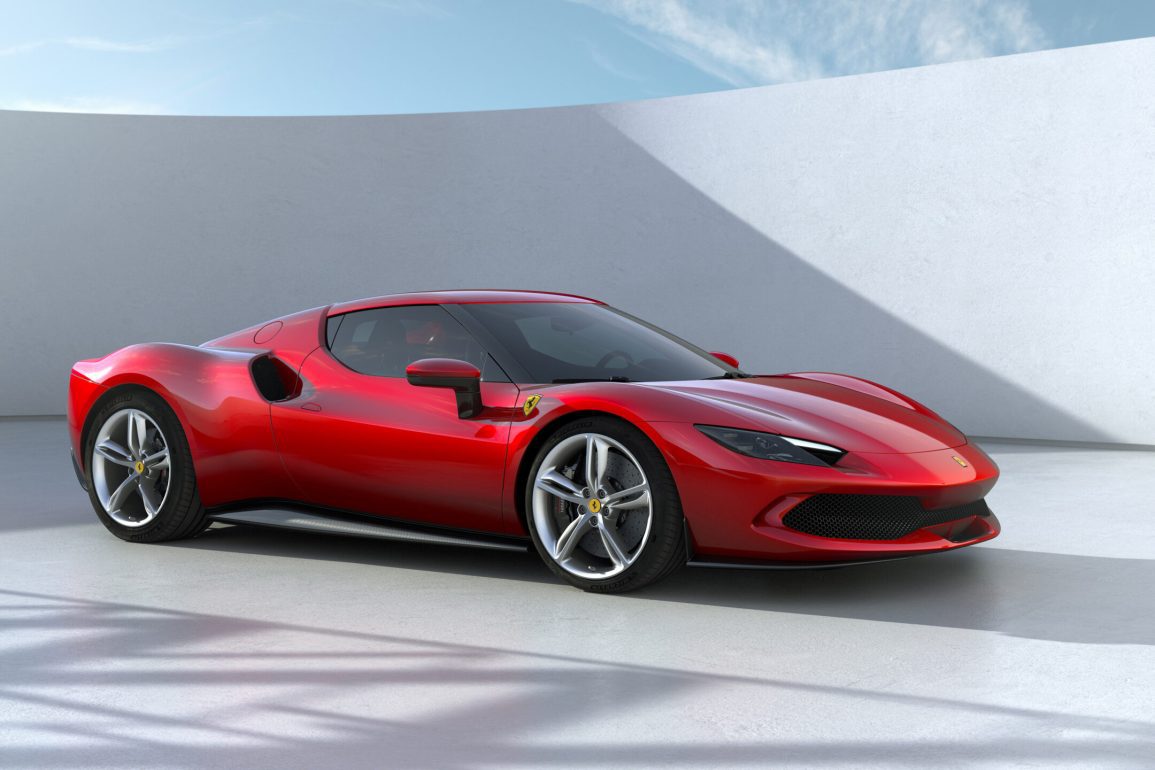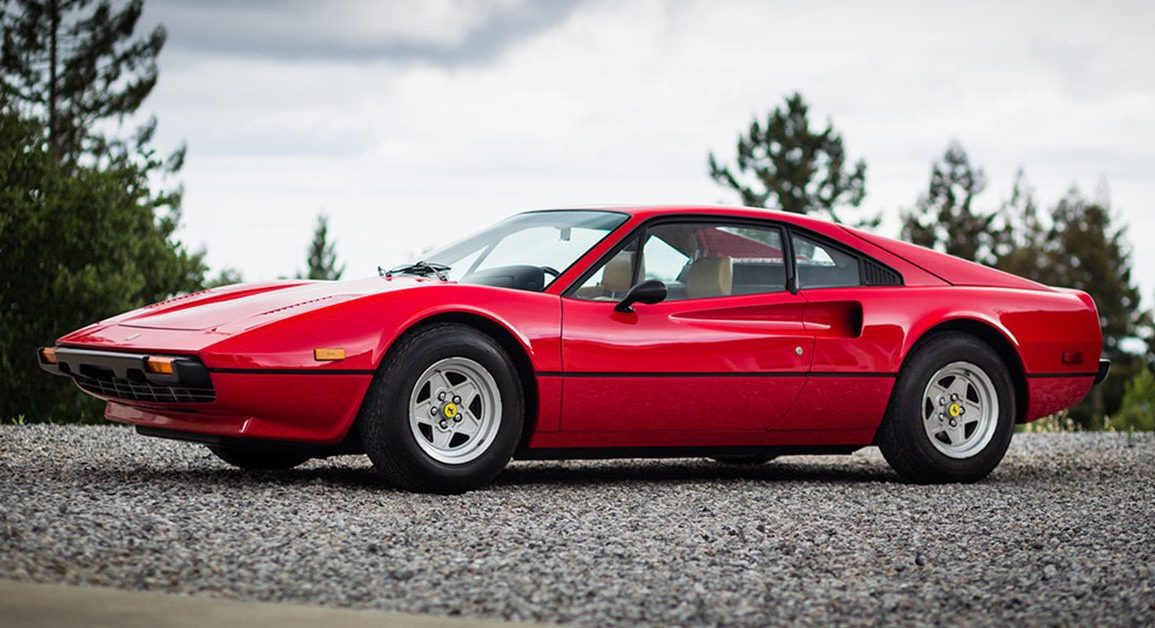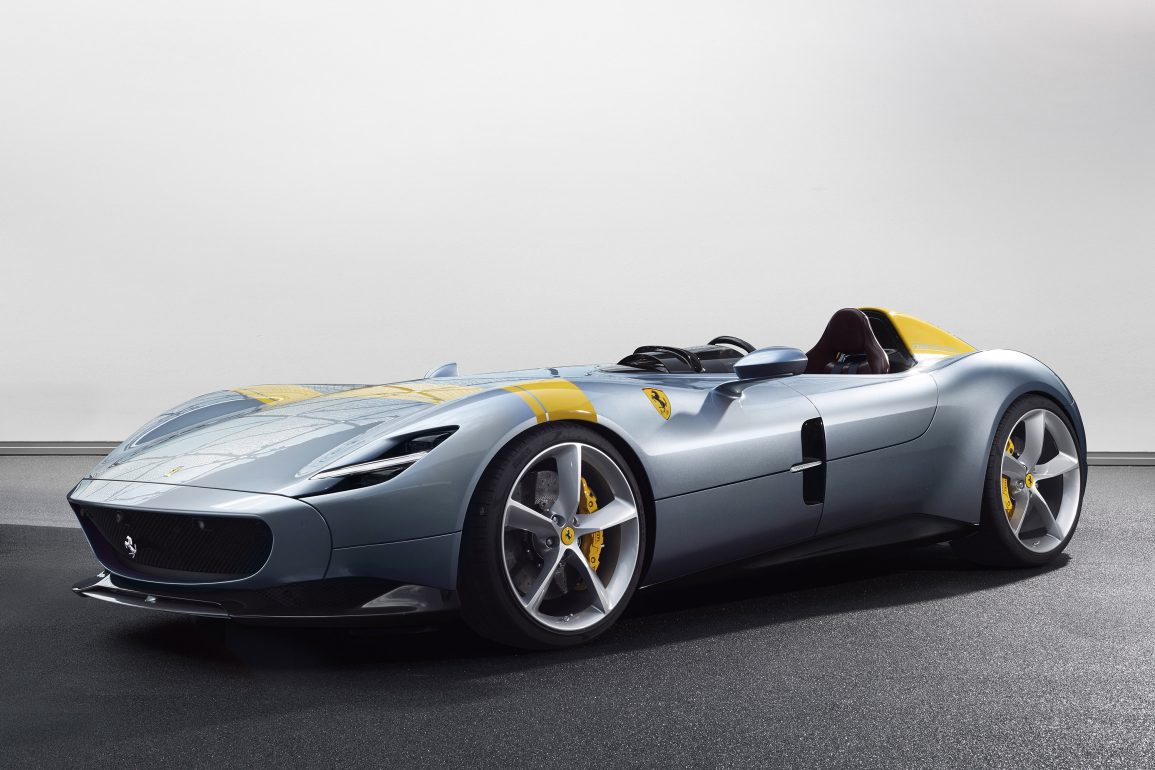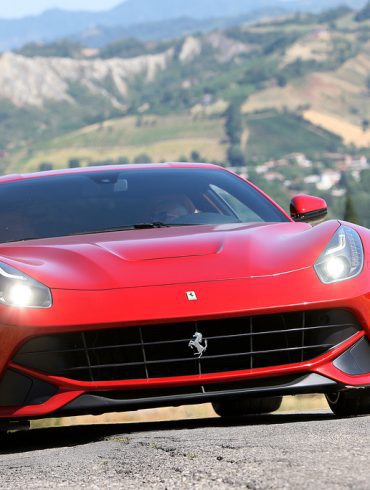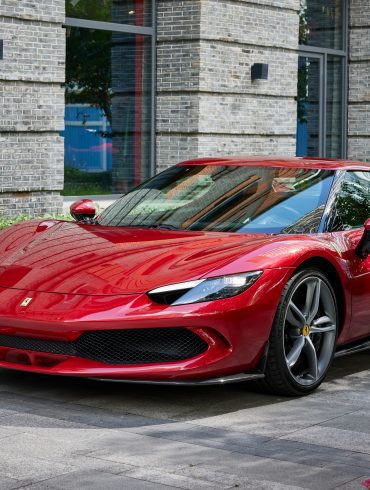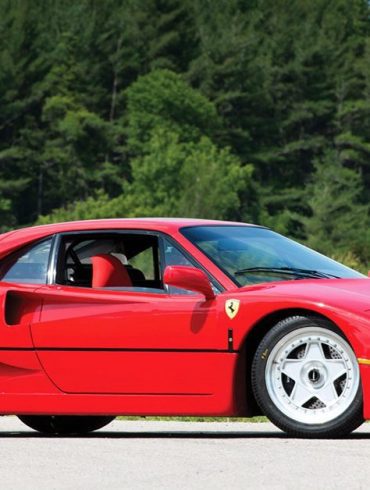The Most Beautiful Ferraris of All Time
The Best-Looking Ferraris Ever Made: Icons of Design and Elegance

The design of these Ferraris has endured time and set the benchmark of automotive beauty
About Our Selections
Ferrari stands is one of the most adored car brands worldwide. Experts and enthusiasts laud their vehicles for their performance, cutting-edge engineering, and alluring designs—often regarded as masterpieces. For years, the Maranello automaker has graced the streets and racetracks with awe-inspiring machines pushing the boundaries of artistry and engineering. This list, which we've compiled in no particular order, honors the most stunning Ferraris ever created and pays tribute to the seamless fusion of beauty and functionality that defines the legendary Prancing Horse marque.
Ferrari is renowned not only for its performance but also for its stunning design. Throughout its history, Ferrari has produced some of the most breathtaking and iconic cars ever seen on the road. In this post, we’ll explore the most beautiful Ferraris ever made, from timeless classics to modern masterpieces, showcasing the models that have defined automotive elegance and style.
Ferrari 250 LM
A stunning Le Mans legend
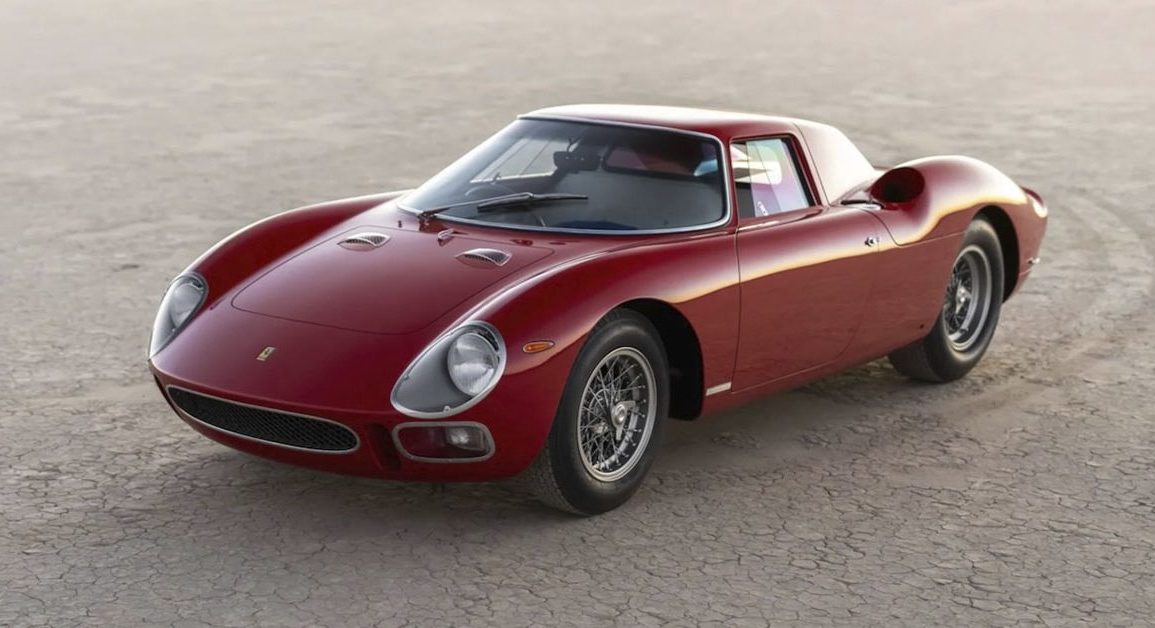
Why We Picked It:
Ferrari and Pininfarina revealed the 250LM at the 1963 Paris Motor Show. Aside from the generous appointments added by Pininfarina just before the show, the 250LM was much like the Ferrari 250P with a roof. Both cars shared the same lengthened Dino Sports Prototype (SP) chassis and the well-tested 250 GT V12. Since this engine fit well within the three-liter limit for racing cars, it was an easy choice.
The chassis detail was quite complex and robust. It included four tubes that carried oil and water to the front-mounted radiators. This helped maintain a better weight balance but made both systems vulnerable to accident damage while increasing cockpit heat.
Fully independent suspension, as were inboard rear brakes, were fitted, which demanded solid half shafts to cope with the load. Ultimately, Ferrari had a small car that weighed only 850 kg when dry. Unfortunately for Ferrari, the FIA was not convinced that the rear engine 250LM was a version of the front engine 250 GT with the necessary production figures for homologation.
Specifications:
Price: $20,000,000
Engine: 3.3L V12
Power: 320 hp
Torque: 231 lb-ft
Transmission: 5-Speed Manual
Curb Weight: 1,808 lbs
Highlights:
At the 1965 LeMans, Ferrari's 250LM sports car fulfilled its purpose by winning the race it was named after
In May 1963, Ferrari increased displacement from the prototype’s 3.0-liter engine to 3.3 liters and started selling copies to private teams like NART, Maranello Concessionaires, Scuderia Filipenetti, and Ecurie Francorchamps.
Learn More:
Ferrari F355 GTS
The sexiest Ferrari?
Why We Picked It:
The Ferrari GTS was introduced in 1995 as part of the F355 range. The GTS model was based on the F355 Berlinetta but featured a "targa-style" roof that could be removed. The same 40-valve V8 engine that made 375 horsepower and 268 lb-ft of torque was utilized in the F355 GTS. All other Berlinetta specifications were identical.
The V8 engine revs to an astonishing 8,250 rpm and produces a powerful and intoxicating exhaust notes, distinctively Ferrari. The 0–62 mph timing of 4.7 seconds and the top speed of 183 mph were remarkable for the time. This Ferrari stands out from the crowd thanks to its eye-catching design, satisfying gated shifter, and booming V8 engine. The cabin features excellent materials and a gorgeous gated shifter, while the exterior design boasts perfect proportions.
One distinctive design feature of the Ferrari 355 GTS is the pop-up headlights, a throwback to the eighties and nineties. Overall, the 355 GTS was physically similar to the 348, but its completely reworked body resulted from wind tunnel research.
Specifications:
Price: $60,000-$300,000
Engine: 4.0L V8
Power: 380 hp
Torque: 268 lb-ft
Transmission: 6-Speed Manual
Curb Weight: 2,976 lbs
Highlights:
Pininfarina's design for the Ferrari F335 made it one of the most beautiful vehicles of the 1990s.
The 355's low profile and wide stance give the car a sense of power and elegance. Some call the F355 the sexiest Ferrari ever.
Learn More:
Ferrari Dino 246 GT
Ferrari's first mid-engine car was also beautiful
Why We Picked It:
In 1968, Ferrari introduced the Dino sub-brand with the 246 as the line's flagship. The Scuderia required a smaller sports vehicle to compete with the Porsche 911, so the Dino was formed from the necessity for more compact V6 and V8 engines.
Dino was the nickname of Ferrari's late son and successor, Alfredo, who was only 24 years old when he passed away and was the only person who influenced Enzo Ferrari to switch from V12 powertrains to V6.
The front-engined Fiat Dino debuted the 2.0-liter engine in 1966, but Ferrari made a mid-engined car version the following year. Since the V6 produced less power than Ferrari's V12-powered cars, Enzo decided it was appropriate to create it as a mid-engined car, making it Ferrari's first mid-engined road car.
The original Dino's engine was only 2.0 liters in size, but the 246's V6 was 2.4 liters. After eight successful years, the Dino brand was discontinued in 1976 when the final Dino 308 GT4 was rebadged as a Ferrari.
Specifications:
Price: $200,000-$400,000
Engine: 2.0L V6
Power: 192 hp
Torque: 166 lb-ft
Transmission: 5-Speed Automatic
Curb Weight: 3,381 lbs
Highlights:
The Dino 246 was among the first Ferraris to have a mid-engine layout. This gave it excellent handling and balance.
The Dino 246 was more affordable than other Ferraris of its time, which made it more accessible to a broader range of buyers.
Learn More:
Ferrari 288 GTO
Beauty needs no explanation
Why We Picked It:
In 1984, Ferrari made a road-legal car that was incredibly beautiful and powerful. The car was developed alongside the Testarossa, and both had iconic Ferrari names: GTO or Gran Turismo Omologato.
The 250 GTO produced between 1962 and 1964 is one of the rarest and most sought-after Ferraris ever. In the golden age of GT sports car racing, this vehicle was homologated as a top contender. The peak speed of the 1984 GTO was conservatively listed at 189 mph, and its 2.8-liter twin-turbocharged V8 engine produced 400 horsepower (140 bhp/liter) of power.
The 288 GTO, like its predecessor, was designed to compete in the FISA Group B racing championship, which required the homologation of 200 customer cars. Due to the termination of the no-holds-barred Group B supercar series, nearly all of the 272 contemporary GTOs produced by Ferrari were converted into street-legal vehicles. Their unique combination of calm management and dynamic aggression has earned them the title "most exciting automobiles ever created."
Specifications:
Price: $3,400,000
Engine: 2.9L Twin-Turbocharged V8
Power: 394 hp
Torque: 366 lb-ft
Transmission: 5-Speed Manual
Curb Weight: 1,984 lbs
Highlights:
At first glance, the GTO’s styling is an evolution of Pininfarina’s twin 1970s mid-engined masterworks: the Berlinetta Boxer and the 308.
The GTO's aerodynamics were designed to be in street-legal conformity with the homologation regulations.
Learn More:
Ferrari 365 GTB/4 Daytona Berlinetta
Irresistible charm
Why We Picked It:
The 365 GTB/4 was Ferrari's final front-engine V12 from the classic era. It debuted at the 1968 Paris Motor Show and set the standard for fast cars with its top speed of 170 miles per hour.
The 365's V12 was located up front like the 275 GTB/4, but it was bored out to 3.6 liters instead of 2.7. Four-wheel disc brakes, independent suspension, and a transaxle situated in the back helped keep the front-to-rear weight distribution of both vehicles even.
Lionardi Fioavanti was responsible for the car's aesthetic, and Pininfarina made painstaking adjustments to Fioravanti's lines. The defining characteristics were the long hood, short tail, and sharp nose. This nose used to have four lights hidden behind a Plexiglas cover, later replaced with pop-up headlights. The 4.4-liter V12 engine's 363 horsepower and 319 lb-ft of torque were responsible for the vehicle's top speed of 170 mph.
Its contemporary supercar, the Lamborghini Miura, with its transversely mounted, quad-cam V12 engine, made the Daytona look antiquated but lacked in outrageousness; it made up with driveability.
Specifications:
Price: $800,000-$2,000,000
Engine: 4.4L V12
Power: 363 hp
Torque: 319 lb-ft
Transmission: 4-Speed Manual
Curb Weight: 3,600 lbs
Highlights:
The Ferrari 365 GTB/4 Daytona was designed to focus on handling and agility. It had a balanced weight distribution and a sophisticated suspension system.
This was the final V-12 Ferrari created before Fiat acquired a 50% stake in the business and before rules significantly impacted automotive design.
Learn More:
Ferrari F50
An underrated beauty
Why We Picked It:
To commemorate Ferrari's 50th year in business, they created a new iconic supercar that combined beauty and beast: the F50. Like the 288 GTO and F40 before it, its primary focus was on motorsports engineering, with minimal attention paid to the comfort of its occupants.
The F50's solidity was a major selling point. It featured a solidly attached chassis with less rubber in the suspension system and lacked front, rear, and engine subframes. The engine and transmission were also the rear support structure and housed the rear suspension parts, and they were attached directly to the central tub.
A V12 engine displacing 4.7 liters provided power; its output was 512 horsepower and 347 lb-ft of torque sent to rear wheels. The six-speed manual transmission and V12 engine were based on Ferrari's 1990 Formula One car. The F50 had a top speed of almost 200 mph and could reach 60 mph from rest in 3.7 seconds.
Specifications:
Price: $2,000,000-$5,000,000
Engine: 4.7L V12
Power: 512 hp
Torque: 347 lb-ft
Transmission: 6-Speed Manual
Curb Weight: 2,910 lbs
Highlights:
The F50 was made extensively from carbon fiber, which made it very lightweight. This gave it excellent performance and agility.
The F50 featured advanced aerodynamic features, such as a large rear wing and a diffuser. These features helped to keep the car stable at high speeds and to generate downforce.
Learn More:
Ferrari 250 GT Lusso
The luxurious racer
Why We Picked It:
The Lusso fell between Ferrari's extreme racing cars and its ultra-luxury offerings. Its goal was to provide the thrill of driving a Ferrari sports car while being fully equipped to handle the rigors of daily life. The GT/L is shorthand for the 250 GT's replacement, a larger and more luxurious version of the outgoing design widely regarded as one of the most aesthetically pleasing vehicles to bear the prancing horse symbol.
Incorporating a V12 engine fed by three Weber carburetors and a Short Wheel Base (SWB) chassis used in some of the earlier race cars gives it a sporty disposition. The GT/L's proportions were impeccable, resulting in a sleek profile thanks to its lengthened body, curved fenders, slim pillars, shortened trunk, and attractive three-piece front bumper.
Pininfarina designed, and Carrozzeria Scaglietti, under Enzo Ferrari's supervision, built the Ferrari 250 GT Lusso. Although Gran Turismo/Lounge (GT/L) was designed to be a grand tourer that could also be driven on public roads, many owners modified their vehicles for track use. The GT/L shared the 250 GTO's short wheelbase (SWB), disc brakes, suspension, and engine, all of which are hallmarks of a race car.
Specifications:
Price: $1,530,000-$2,800,000
Engine: 3.0L V12
Power: 240 hp
Torque: 215 lb-ft
Transmission: 4-Speed Manual
Curb Weight: 2,890 lbs
Highlights:
The Ferrari 250 GT Lusso was the first Ferrari road car to use a ducktail, a design element first developed for racing and later adapted for use on road cars.
The E46 M3 has a timeless design that is elegant and aggressive, inspired by BMW's motorsport heritage.
Learn More:
Ferrari 250 GTO
The Holy Grail
Why We Picked It:
One of the ultimate production road racers was the Ferrari 250 GTO. Classic proportions and a striking profile give this automobile instant recognition, and its unparalleled racing success only adds to its legend.
In addition, only 36 Ferrari 250 GTOs were ever made, making it the most sought-after Ferrari model due to its innovative design and significant record in road racing.
The Ferrari 250 GTO's aerodynamic design and potent hand-built V12 engine allowed it to reach an incredible top speed of 170 mph. The GTO's exterior was a masterful creation by Giotto Bizzarrini, who relied heavily on wind tunnel testing.
The Ferrari 250 GTO was the first car to have a rear spoiler that was built into the body. With its tall rear end and whisper-quiet performance, it has quickly become a motorsports legend.
It quickly gained praise as the car with the most distinctive design. The Ferrari 250 GTO is widely considered one of the most aesthetically pleasing cars ever and the most expensive in history.
Specifications:
Price: $30,000,000-$70,000,000
Engine: 3.0L V12
Power: 302 hp
Torque: 216 lb-ft
Transmission: 5-Speed Manual
Curb Weight: 2,229 lbs
Highlights:
The GTO won three World Sportscar Championships, ushering in the end of a halcyon time when race vehicles could also be driven on the street.
The Ferrari 250 GT SWB significantly influenced the car's design by Sergio Scaglietti. Its aggressive yet refined silhouette, grille up front, and rounded body give it a classic and alluring look.
Learn More:
Ferrari Testarossa
The timeless Ferrari
Why We Picked It:
The Ferrari Testarossa is widely recognized as one of the most legendary cars ever produced. Brand loyalists were initially unwilling to accept the new model due to its odd appearance, but they came around in the end.
The Pininfarina-designed car looked incredibly futuristic. However, the Testarossa is currently considered among the most visually appealing Ferrari cars ever made.
This fantastic supercar was powered by a 5.0-liter flat-12 engine, which generated 390 horsepower and 354 pound-feet of torque. It could reach its top speed of 180 mph and 60 mph in 5.6 seconds.
The Testarossa is a symbol of automotive excess and high performance. It became an immediate classic thanks to its eye-catching appearance, potent engine, and outstanding performance. Collectors who value its one-of-a-kind look and performance have kept it in great demand since its introduction in the 1980s.
Specifications:
Price: $150,000-$300,000
Engine: 4.9L Flat-12
Power: 385 hp
Torque: 361 lb-ft
Transmission: 5-Speed Manual
Curb Weight: 3,766 lbs
Highlights:
The Testarossa boasted a striking wedge-shaped profile with a low, wide stance. Its sleek, angular design and pop-up headlights add to its clean, aerodynamic front end.
One of the most iconic Testarossa design elements is its side strakes, or "cheese grater" cooling vents.
Learn More:
Ferrari 550 Maranello
Sleek never looked so good
Why We Picked It:
The 550 Maranello is a special car for Ferrari. With its front engine/rear-wheel drive platform, the 550 brought back a classic drivetrain layout not used since the Ferrari 365 GTB/4 Daytona production ceased in 1973. The car was designed for grand touring with higher comfort than the F355 and F50 produced concurrently.
Named in honor of Ferrari’s headquarters in Maranello, the 550 was first introduced in 1996. The car used technology from the 456 2+2 but featured an entirely new 5.5-liter V12 that could produce nearly 500 bhp. The steel chassis is a modified version of the one in the F456 and supports an aluminum alloy body.
This engine is mated to a 6-speed manual transaxle gearbox, powering the rear wheels. The 0 to 60 mph time is 4.3 seconds, with a top speed of 199 mph. The Ferrari 550 Maranello has a classic and elegant design that has stood the test of time.
Specifications:
Price: $150,000-$250,000
Engine: 5.5L V12
Power: 480 hp
Torque: 418 lb-ft
Transmission: 6-Speed Manual Transaxle
Curb Weight: 3,726 lbs
Highlights:
The Ferrari 550 Maranello has excellent performance and handling, making it a delightful car to drive.
The 550 Maranello boasts one of the sleekest, most unassuming designs of any Ferrari that has stood the test of time. The car has a classic and elegant look that is both understated and sophisticated.
Learn More:
Ferrari 296 GTB
The hybrid performance machine with stunning looks to match
Why We Picked It:
The Ferrari 296 GTB is a revolutionary addition to Ferrari’s lineup, representing a new chapter in the brand’s history as it introduces a V6 hybrid powertrain to its road cars. Unveiled in 2021, the 296 GTB merges Ferrari’s iconic performance and design with modern hybrid technology, making it a forward-looking supercar that balances sustainability with sheer power.
At the heart of the Ferrari 296 GTB is a 3.0-liter twin-turbocharged V6 engine paired with an electric motor, producing a combined 818 horsepower and 546 lb-ft of torque. This makes it one of Ferrari’s most powerful models despite the smaller engine. The electric motor adds an extra boost of power while improving efficiency, allowing the 296 GTB to drive up to 15 miles on electric power alone. The car’s plug-in hybrid system enables Ferrari to meet modern environmental standards without sacrificing the thrilling performance Ferrari is known for. With its hybrid setup, the 296 GTB can accelerate from 0 to 60 mph in just 2.9 seconds and reach a top speed of over 205 mph, offering blistering speed and incredible agility.
The Ferrari 296 GTB is a blend of modern innovation and classic design cues. The exterior is sleek and aerodynamically optimized, with Ferrari focusing on clean lines and smooth surfaces to maximize performance. The rear features a distinctive, compact design, with active aerodynamics, including a retractable rear spoiler, providing optimal downforce and stability at high speeds.
Specifications:
Price: Starting at $317,986
Engine: 3L Twin-Turbo V8 + Electric
Power: 819 hp
Torque: 546 lb-ft
Transmission: 8-speed dual-clutch
Curb Weight: 3,532 lbs
Highlights:
The Ferrari 296 GTB features a 3.0-liter twin-turbo V6 engine paired with an electric motor, producing a combined 818 horsepower.
Marks Ferrari’s first road car with a V6 engine since the Dino, blending heritage with cutting-edge hybrid technology.
It can drive up to 15 miles on electric power alone, combining eco-conscious performance with Ferrari's trademark power.
Learn More:
Ferrari 308 GTB
Quintessential representations of Ferrari in the 1970s and 1980s.
Why We Picked It:
As big fans of classic, raw and basic cars it is a bit surprising that the 308/328 isn’t higher on our list but I guess that says a lot about the competition for top honors in this prestigious list.
The Pininfarina designed 308 was the first of the mid-engined V8 breed to emerge from Ferrari and made its debut in 1975. While it is slow by today’s standards it is just a great car all around and so much fun.
The carb-fed 2.9-litre mid-mounted V8 packed 252 hp and hustled the ~2000 pound Ferrari to 60 mph in 6 seconds (not bad for 1975 actually). Top speed was 152 mph. The classic design is known by everybody and is still pretty modern with its wedge shape and vents.
Ferrari expanded the 308 lineup with several variants of the coupe and convertible models. Fuel injection arrived in 1980, a V8 with four valves per cylinder made its debut in 1982, and Ferrari gave its entry-level model a new 3.2-liter engine in 1985. The extra displacement warranted an updated design and a new name — 328 GTB. Our pick is the 328.
Specifications:
Price: $80,000 - $120,000
Engine: Naturally Aspirated 3.2L V8
Power: 270hp
Torque: 224 lb-ft
Top Speed: 163 mph
Highlights:
Both the Ferrari 308 and 328 feature a mid-mounted naturally aspirated V8 engine, with the 308 producing around 240 horsepower and the 328 increasing to 270 horsepower.
Pininfarina-designed bodywork with sleek lines, pop-up headlights, and a wedge shape, becoming one of Ferrari’s most iconic designs.
The 328 was praised for improvements in build quality and mechanical reliability.
Learn More:
Ferrari Monza SP1
Crafted for the ultimate open-air driving experience.
Why We Picked It:
The Ferrari Monza SP1 is a limited-edition, open-top speedster introduced as part of Ferrari’s Icona series, which pays homage to the brand’s legendary racing heritage. Inspired by classic Ferrari barchettas from the 1950s, such as the 166 MM and 750 Monza, the SP1 is a single-seater designed for purist driving enthusiasts. At the heart of the Ferrari Monza SP1 is a naturally aspirated 6.5-liter V12 engine, borrowed from the Ferrari 812 Superfast. This powerful engine produces 809 horsepower and 530 lb-ft of torque.
The design of the Ferrari Monza SP1 is a modern interpretation of the classic barchetta style. Its sleek, minimalistic bodywork emphasizes clean lines and a low, sculpted silhouette that harks back to Ferrari’s racing roadsters of the 1950s. With no roof or windshield, the SP1 provides an unfiltered, open-air driving experience. To manage airflow, Ferrari designed a "Virtual Windshield" integrated into the car’s aero system, which helps divert air around the driver for greater comfort at high speeds.
The Monza SP1’s body is made largely of carbon fiber, contributing to its lightweight construction and enhancing its performance capabilities. The use of lightweight materials and a minimalist interior ensures that the SP1 maintains Ferrari’s focus on delivering an unadulterated driving experience.
Specifications:
Price: $1,800,000
Engine: 6.5L Naturally Aspirated V12
Power: 809 hp
Torque: 530 lb-ft
Transmission: 7-speed dual clutch
Curb Weight: 3,307 lbs
Highlights:
Unique single-seater layout offers an unfiltered, immersive driving experience focused solely on the driver.
Inspired by Ferrari's 1950s racing roadsters, the Monza SP1 combines modern performance with retro design elements.
Features an innovative "Virtual Windshield" that channels airflow to protect the driver in the absence of a physical windshield.


